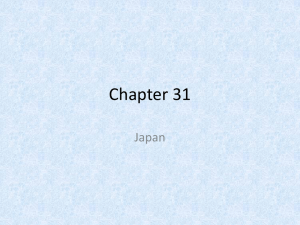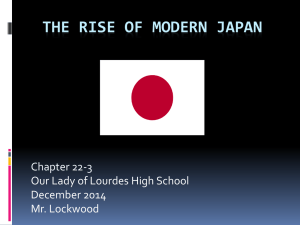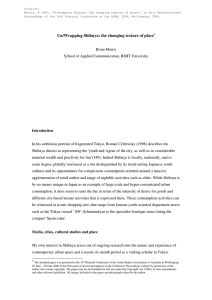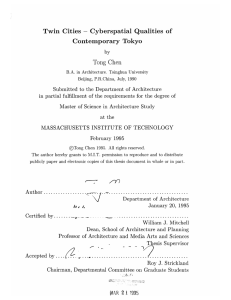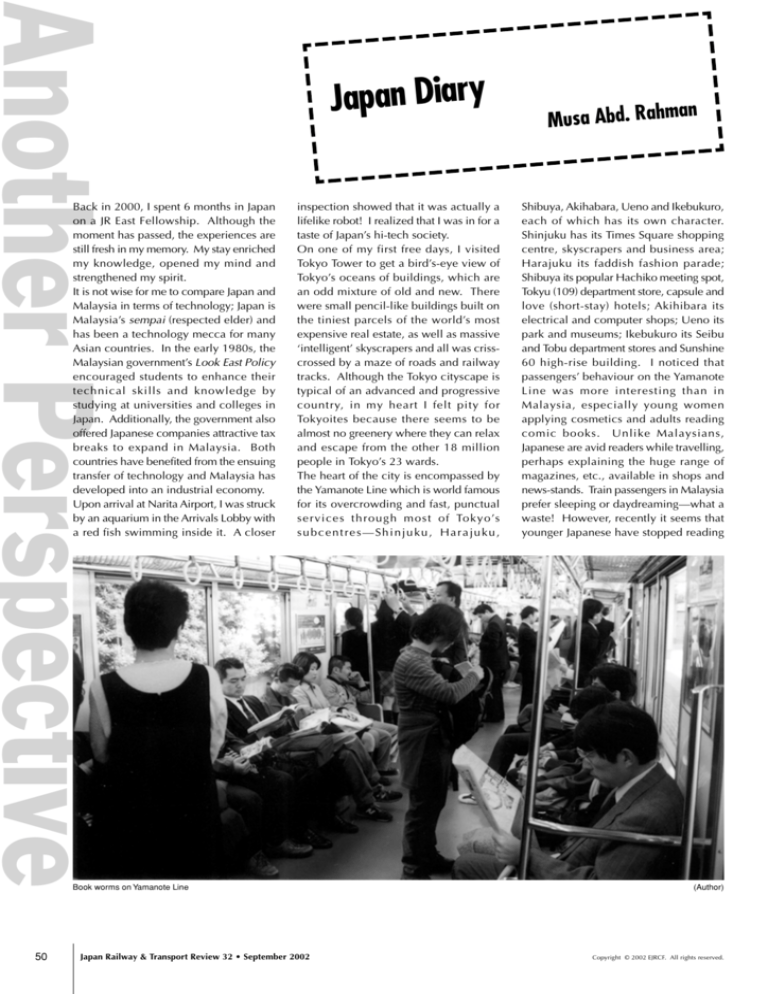
Another Perspective
Back in 2000, I spent 6 months in Japan
on a JR East Fellowship. Although the
moment has passed, the experiences are
still fresh in my memory. My stay enriched
my knowledge, opened my mind and
strengthened my spirit.
It is not wise for me to compare Japan and
Malaysia in terms of technology; Japan is
Malaysia’s sempai (respected elder) and
has been a technology mecca for many
Asian countries. In the early 1980s, the
Malaysian government’s Look East Policy
encouraged students to enhance their
technical skills and knowledge by
studying at universities and colleges in
Japan. Additionally, the government also
offered Japanese companies attractive tax
breaks to expand in Malaysia. Both
countries have benefited from the ensuing
transfer of technology and Malaysia has
developed into an industrial economy.
Upon arrival at Narita Airport, I was struck
by an aquarium in the Arrivals Lobby with
a red fish swimming inside it. A closer
Japan Diary
inspection showed that it was actually a
lifelike robot! I realized that I was in for a
taste of Japan’s hi-tech society.
On one of my first free days, I visited
Tokyo Tower to get a bird’s-eye view of
Tokyo’s oceans of buildings, which are
an odd mixture of old and new. There
were small pencil-like buildings built on
the tiniest parcels of the world’s most
expensive real estate, as well as massive
‘intelligent’ skyscrapers and all was crisscrossed by a maze of roads and railway
tracks. Although the Tokyo cityscape is
typical of an advanced and progressive
country, in my heart I felt pity for
Tokyoites because there seems to be
almost no greenery where they can relax
and escape from the other 18 million
people in Tokyo’s 23 wards.
The heart of the city is encompassed by
the Yamanote Line which is world famous
for its overcrowding and fast, punctual
services through most of Tokyo’s
subcentres—Shinjuku, Harajuku,
Book worms on Yamanote Line
50
Japan Railway & Transport Review 32 • September 2002
an
Musa Abd. Rahm
Shibuya, Akihabara, Ueno and Ikebukuro,
each of which has its own character.
Shinjuku has its Times Square shopping
centre, skyscrapers and business area;
Harajuku its faddish fashion parade;
Shibuya its popular Hachiko meeting spot,
Tokyu (109) department store, capsule and
love (short-stay) hotels; Akihibara its
electrical and computer shops; Ueno its
park and museums; Ikebukuro its Seibu
and Tobu department stores and Sunshine
60 high-rise building. I noticed that
passengers’ behaviour on the Yamanote
Line was more interesting than in
Malaysia, especially young women
applying cosmetics and adults reading
comic books. Unlike Malaysians,
Japanese are avid readers while travelling,
perhaps explaining the huge range of
magazines, etc., available in shops and
news-stands. Train passengers in Malaysia
prefer sleeping or daydreaming—what a
waste! However, recently it seems that
younger Japanese have stopped reading
(Author)
Copyright © 2002 EJRCF. All rights reserved.
Umihotaru Island on Tokyo Bay Aqua Line
(Japan Highway Public Corporation)
and are spending their free time on trains
sending e-mail from mobile telephones.
During my second week, an earthquake
hit at about three in the morning. I was
shocked and could not get back to sleep
because it was my first experience of
an earthquake. Afterwards, I was
worried about travelling in subways in
case an earthquake hit but I later found
that all modern structures are fully
earthquake-proof.
As a Muslim, I had two worries about
spending 6 months in Japan—could I
perform my prayers and would my
religious dietary restrictions be difficult to
observe? There are mosques in Otsuka,
Shin Okubo, Shibuya, Asakusa, Chiba,
Narimasu and other places outside Tokyo
so I had no problems in performing my
prayers. When there was no mosque, I
performed my prayers in other open
spaces, parks, etc.
I came with a 3-month supply of
Malaysian foods, curries, etc., because I
guessed I could not tolerate Japanese
food, especially sashimi or raw fish.
Amazingly, after 1 month I had adapted;
I found many cheap restaurants where I
could eat soba buckwheat noodles, udon
noodles, and seafood and vegetable dishes.
The ubiquitous AM-PM, Family Mart, and
7 Eleven convenience stores all sold onigiri
rice balls and bread 24 hours a day.
Copyright © 2002 EJRCF. All rights reserved.
Author (third from right) taking Japanese language class at Overseas Vocational
Training Association (OVTA)
(Author)
A very new experience was the tokenvending machine outside cheap
restaurants; instead of paying inside the
restaurant, one first buys a token from the
machine and exchanges it for the chosen
dish. Soba noodles eaten while standing
convinced me that some Japanese people
are always in a hurry. I was shocked to
find alcohol on sale in the very few
Muslim restaurants, even though it is
proscribed.
An interesting spot is the Tokyo Bay Aqua
Line (TBAL). At first, I thought it was just
a bridge connecting Kisarazu in Chiba
with Umihotaru Island 5 km offshore, but
actually this island is man-made and is
the entrance to a 10-km undersea tunnel
to Kawasaki on the Tokyo side of Tokyo
Bay. The project to link Kisarazu and
Kawasaki was one of Japan’s largest public
works in the late 1990s and construction
involved excavating in difficult soft
submarine ground. Although the toll to
cross Tokyo Bay through the TBAL bridge
and tunnel is very high, it cuts the journey
time to just 20 minutes instead of making
a long 2-hour drive through Tokyo.
Japan has become the second largest
economy in the world and English is
spoken widely in the Japanese business
and engineering world, but proficiency in
Japanese is still a must for making the most
of an extended stay in Japan. My fellow
trainees came from Vietnam, Thailand and
Mongolia so communications between us
and our teachers in English was difficult
and based mostly on sign language! But
as our 6-week course in basic Japanese
progressed, we were able to use simple
Japanese to express ourselves, get around
and ask questions. I found that being
almost totally immersed in Japanese
culture and environment gave more
opportunities to practice phrases that we
had learned in class and help speed our
understanding of Japan and her people.
■
Musa Abd. Rahman
Mr Rahman is Senior Property Manager of Malaysian Railway in Kuala Lumpur as well as a licensed
tax accountant and company secretary. He was a trainee in the Life Style Business Development
Department of JR East in 2000. He has a B. Sc. (Survey) in property management and valuation.
Japan Railway & Transport Review 32 • September 2002
51

